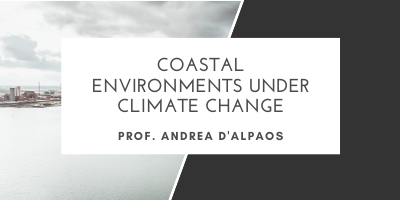Coastal Environments Under Climate Change

Period: first semester
Aim of the course:
1) provide basic concepts for the analysis of the long-term morpohodynamic evolution of coastal systems like e.g., barrier systems, lagoons, deltas, and estuaries;
2) address the role of biogeomorphic processes on the morphological equilibrium and dynamics of coastal systems;
3) analyse the response of coastal systems to changes in the governing environmental forcings.
Course units contents:
- Morphodynamics and biogemorphodynamics. Short introduction to coastal systems and to their morphodynamic evolution in response to physical and biological forcings (0.5 CFU).
- Relative sea level and its variations. Tides, waves, currrents, and sediment transport processes in shallow water systems (1.5 CFU).
- Morphology and evolution of barrier islands, lagoons, deltas, and estuaries (2.5 CFU).
- A case study: The Venice Lagoon and its morphological evolution during the past centuries. Will Venice survive? (0.5 CFU).
- General effects of a rising sea level. Natural and anthropogenic forcings. Effects of a changing climate. Effects on lagoons, deltas, and estuaries (1.0 CFU).
Planned learning activities and teaching methods:
- Classes during which theoretical issues will be introduced together with the analysis of actual case studies. Laboratory analyses, field activities.
- Two field trips to the Venice Lagoon, to analyze the typical morphological structures of a lagoonal system (salt marshes, tidal flats, and channel networks) and collect soil samples that will be analyzed in the laboratory.
- Analysis of soil samples in the lab, laboratory experiments on sediment transport within a flume;
- Use of a simple morphodynamic model to analyze the evolution of tidal systems in response to changes in the environmental forcings (e.g., sea-level rise and sediment supply).